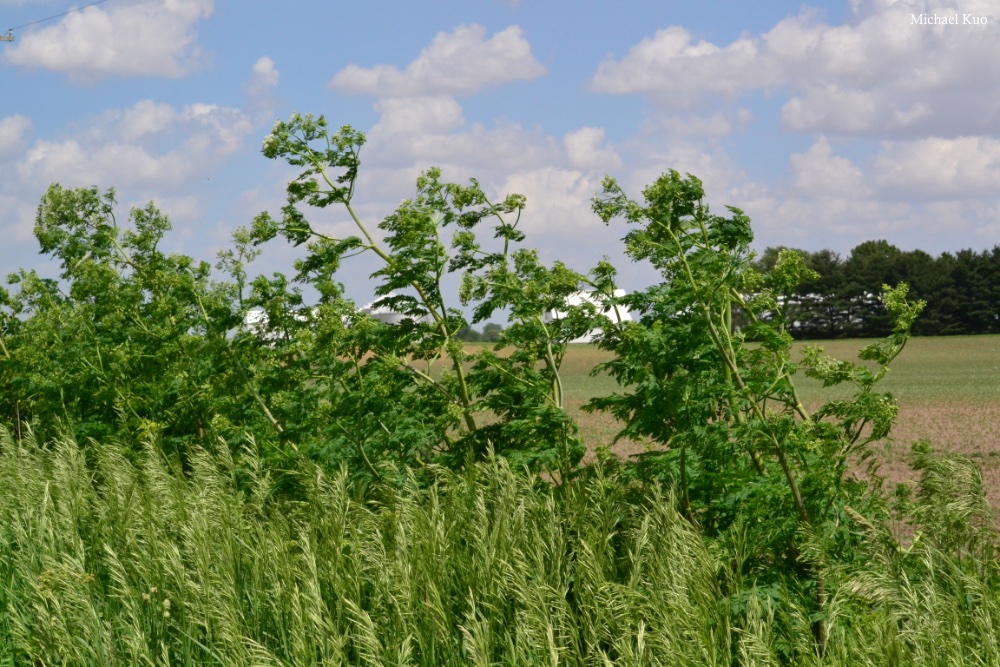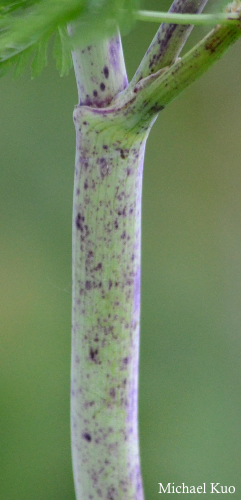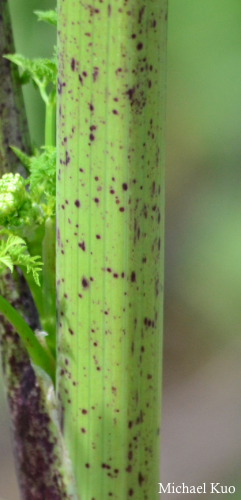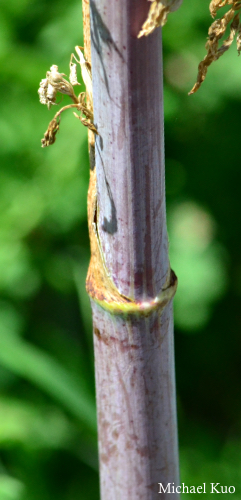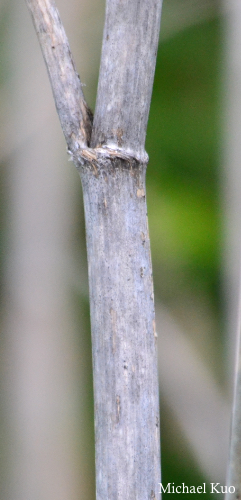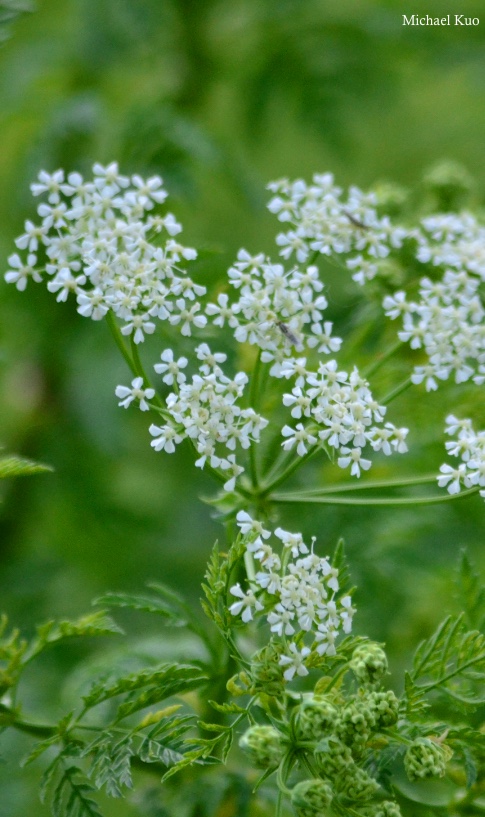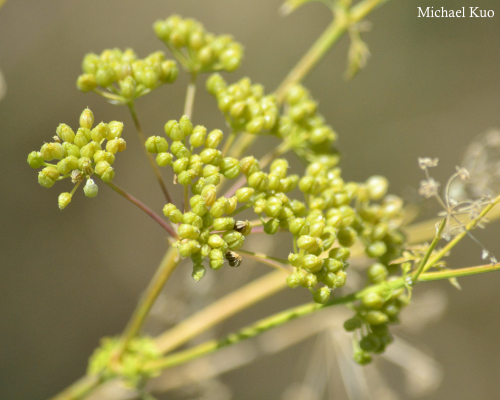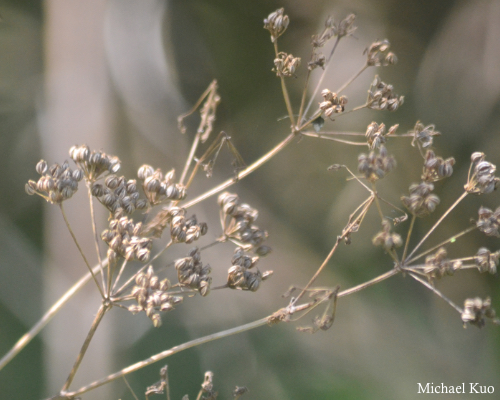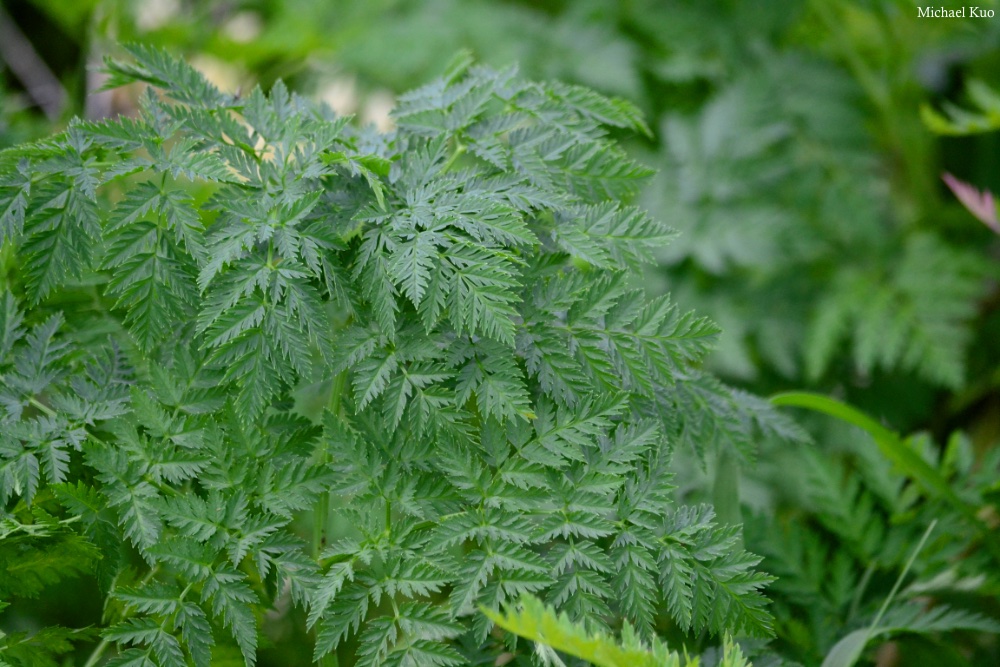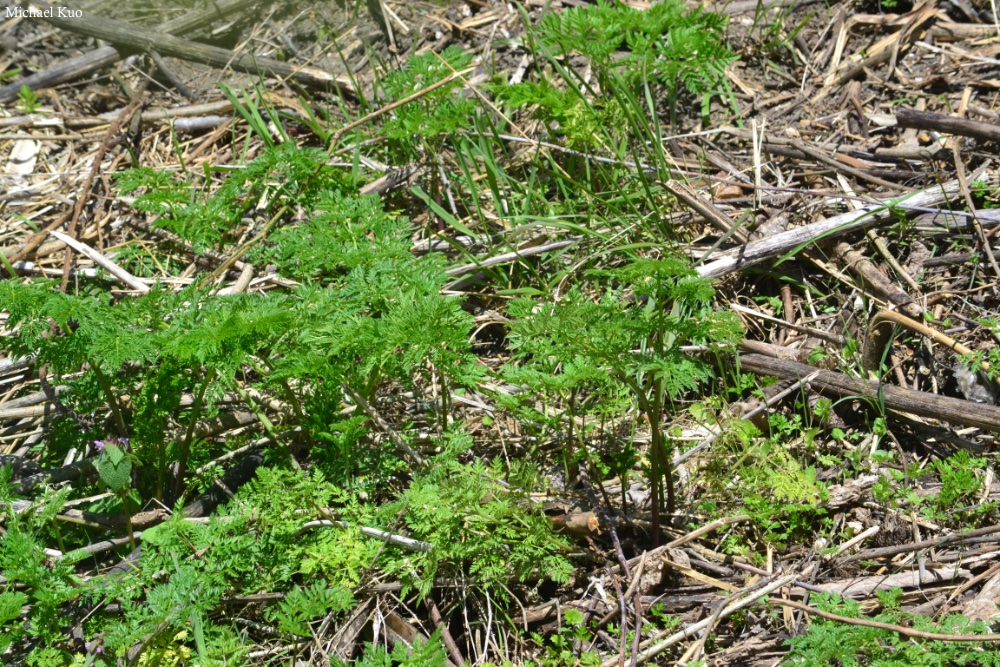|
Introduced from Europe and western Asia, Conium maculatum can be found throughout the Midwest—though it is more common in a band from Ohio to Missouri. It is, according to legend, the plant used to execute Socrates (who may himself be a legend, but that's a discussion for another day). Conium maculatum is a towering plant, usually appearing along roadsides, in empty lots, next to fields, and in similar waste places. It can be confused with Daucus carota, Queen Anne's lace, since they are both members of the carrot family and have similar features. However, poison hemlock features purplish red spots on its stem (maculatum means "spotted"), while Queen Anne's lace does not. Additionally, poison hemlock appears in late spring and early summer, earlier than Queen Anne's lace, which appears from mid-summer through fall, although there is some overlap. Several other, less common members of the carrot family are also similar, but only Conium maculatum features purple-red spots on its stem. Additional identifying features include the tall size at maturity (up to 8 feet high), the lacy foliage (the leaves are doubly pinnate), and the loosely packed flowerheads containing small, white, 5-petaled flowers. Conium maculatum is poisonous (potentially fatally) to people and to animals when ingested and, according to some sources, it can cause dermatitis when handled.
|

midwestern range
|
|



